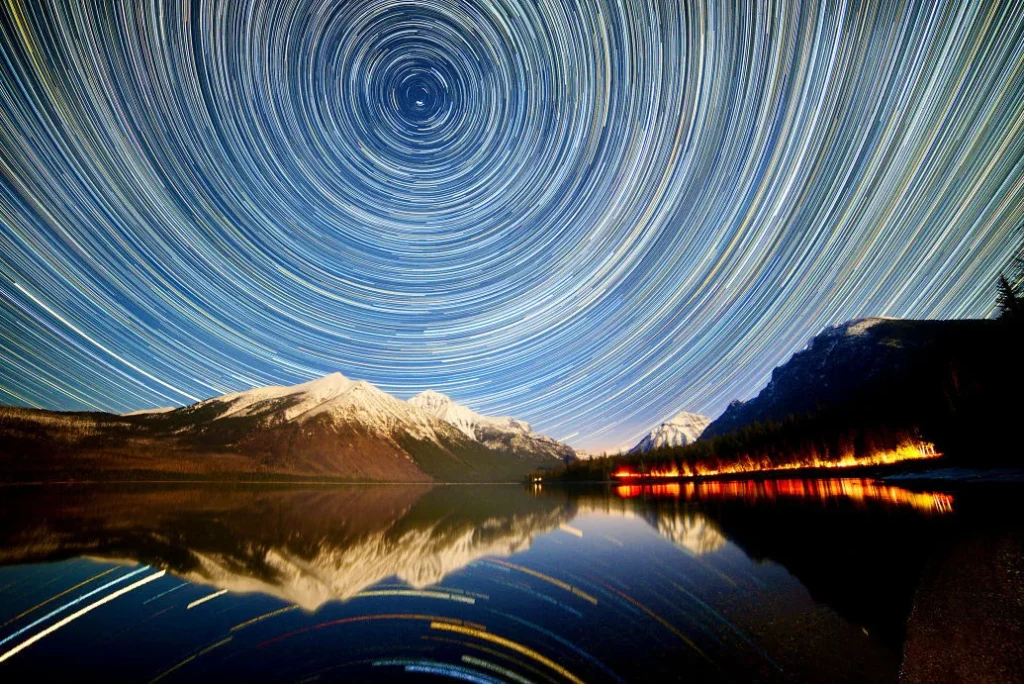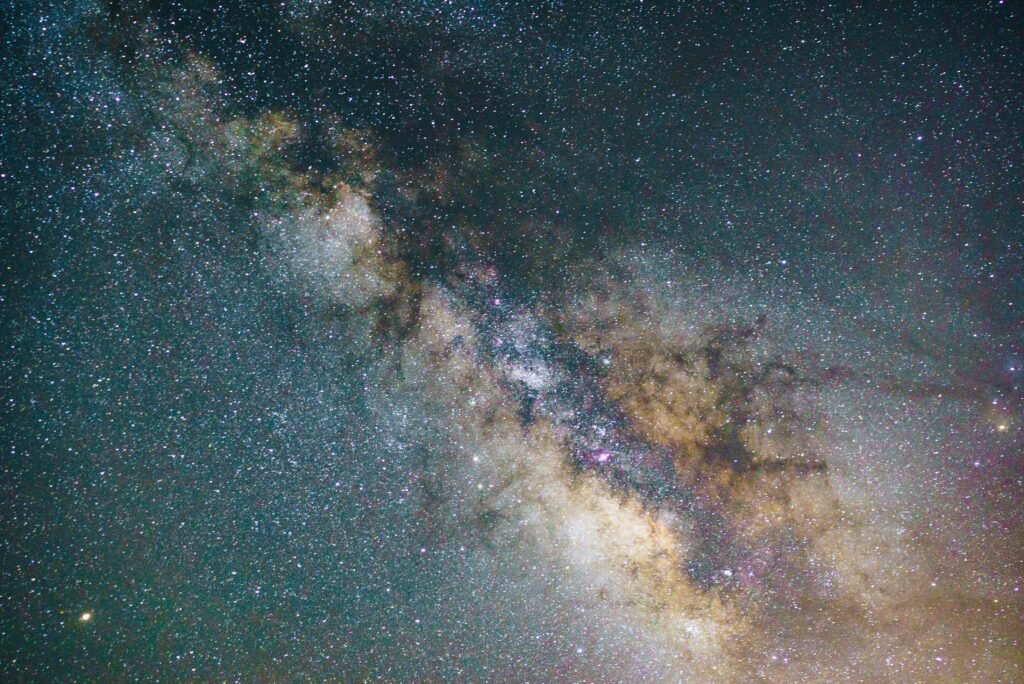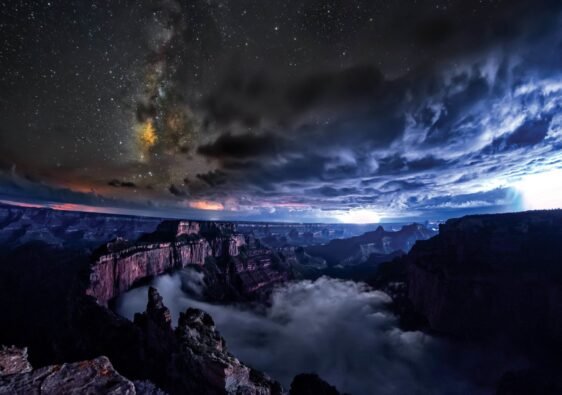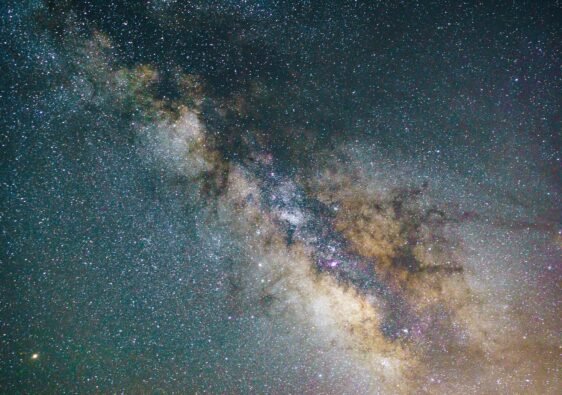
Introduction to Great Basin National Park
Great Basin National Park, established in 1986, is nestled in eastern Nevada near the Utah border. This remarkable natural reserve spans over 77,000 acres, showcasing a diverse array of ecosystems rich in flora and fauna. The park is elevated in the Great Basin, a unique desert region characterized by its arid climate and stunning mountain landscapes. This geographical location contributes to the park’s exceptional biodiversity, making it a significant area for both ecological research and recreational activities.
One of the park’s standout features is its ancient bristlecone pine trees, which are among the oldest living organisms on the planet. Some of these trees have been determined to be over 4,800 years old, with their twisted trunks and gnarled branches telling a story of resilience against harsh weather conditions. These ancient trees thrive at high elevations, particularly in the areas surrounding Wheeler Peak, and attract visitors keen on exploring their historical significance and unique adaptations.
Beyond its ecological wonders, Great Basin National Park is renowned for its unparalleled night skies, which have garnered a reputation for being some of the darkest and most pristine in the contiguous United States. The park’s remote location, coupled with minimal light pollution, offers stargazing enthusiasts a breathtaking canvas of celestial wonders. Visitors can witness the Milky Way glimmering overhead, as well as numerous constellations and celestial events, further enhancing the allure of this natural treasure.
This combination of ancient bristlecone pines and stellar views makes Great Basin National Park a must-visit destination for nature lovers, astronomers, and anyone seeking tranquility in a breathtaking setting. The park not only provides an opportunity for exploration and adventure but also serves as a reminder of the enduring beauty of nature and the history etched into its ancient trees.
Top Tours Close By
top tours
The Fascinating Bristlecone Pines
Bristlecone pines, known scientifically as Pinus longaeva, are among the oldest living trees in the world and can be found thriving in the harsh environment of Great Basin National Park. These remarkable trees are distinguished not only by their age but also by their resilience to extreme conditions. Living for thousands of years, some specimens are estimated to be over 4,800 years old, making them a critical specimen for scientific research and a living window into historical climatic conditions.
The unique longevity of the bristlecone pine is largely attributed to their ability to survive in the challenging mountain climate characteristic of the Great Basin region. They thrive at high altitudes, specifically in rocky, alpine environments, where other species struggle. Their growth is slow, and they often appear gnarled and twisted, a reflection of the harsh winds and poor soil in which they exist. The trees’ dense and resinous wood is resistant to rot and insect damage, further contributing to their incredible lifespan. This adaptation allows bristlecone pines to endure the cyclic threats of nature, from extreme temperatures to snowfall, making them excellent candidates for longevity.
Researchers have studied these ancient trees to gain insights into climate change and environmental history. Through dendrochronology, the science of dating tree rings, scientists can determine the age of bristlecone pines and analyze patterns of growth in relation to historical climatic events. These dendrochronological studies have revealed critical information about past environmental conditions, aiding in the understanding of our planet’s climatic changes over millennia. Such valuable research not only highlights the importance of preserving these magnificent trees but also sheds light on the broader ecological system of the Great Basin National Park, further amplifying their significance beyond mere beauty and awe.
Why Great Basin is a Stargazing Paradise
Great Basin National Park, located in eastern Nevada, stands out as a premier destination for stargazing enthusiasts due to several key factors that create an optimal celestial viewing experience. One of the most significant advantages of this park is its minimal light pollution. Unlike urban areas with excessive artificial lighting, Great Basin offers vast, unblemished expanses of natural darkness. This lack of light pollution not only enhances visibility of celestial bodies but also allows for clearer, more vivid representations of the cosmos, making for unforgettable nocturnal experiences.
Top Food Tours
The park is situated at a high elevation, approximately 13,063 feet at its highest point, the summit of Wheeler Peak. This elevated terrain plays a crucial role in improving stargazing conditions by reducing atmospheric interference. Less atmosphere means less distortion, resulting in sharper and brighter views of stars, planets, and other astronomical phenomena. As such, visitors can witness an impressive array of celestial objects, from the mesmerizing Milky Way to distant galaxies. These natural advantages make Great Basin a favorite among both amateur and seasoned astronomers.
In addition to high elevation and minimal light pollution, Great Basin National Park boasts some of the clearest skies in the United States. The park’s location away from major urban centers ensures that skywatchers can enjoy consistently clear nights, especially during specific seasons. Its designation as an International Dark Sky Park further solidifies its reputation as a stargazing paradise. This recognition, awarded by the International Dark-Sky Association, signifies that the park actively promotes and preserves dark skies for the benefit of both ecology and human enjoyment of the night sky. Visitors are encouraged to engage in stargazing programs and activities, enhancing their awareness and appreciation of the universe while preserving the natural darkness for future generations.
Best Stargazing Spots in Great Basin National Park



Great Basin National Park is renowned for its dark skies, making it an exceptional destination for stargazing enthusiasts. With minimal light pollution and a diverse landscape, the park offers numerous spots that promise breathtaking celestial views. One of the foremost locations is Wheeler Peak, the second-highest peak in Nevada. Accessible via a short hike from the Wheeler Peak Campground, this vantage point elevates stargazers above the tree line, providing unobstructed views of the Milky Way and distant constellations. Visitors often remark on the stunning clarity of the night sky from this elevation, especially during new moon phases.
Another notable location is the Lehman Caves Visitor Center area, which is open for evening stargazing activities following ranger-led programs. This site is easily accessible, making it perfect for families and those who may not wish to venture far from their vehicles. The backdrop of the rugged mountains adds a dramatic presentation to the stellar sights. The visitor center frequently hosts events that enhance the stargazing experience with educational talks about the cosmos, providing valuable insights into initiatives like the International Dark Sky Association.
The park’s various campgrounds, such as the Upper and Lower Lehman Campgrounds, also serve as excellent stargazing spots. These campgrounds offer proximity to nature and allow campers to set up telescopes to delve deeper into the night sky. With picnic tables and fire rings, they provide a comfortable setting for a cozy stargazing night with family or fellow travelers. Being away from city lights, these campgrounds create a peaceful atmosphere that is conducive to both amateur and seasoned astronomers eager to observe celestial wonders.
In conclusion, Great Basin National Park is home to several remarkable stargazing spots that enhance the experience of observing the night sky. With locations like Wheeler Peak, the Lehman Caves Visitor Center area, and the park campgrounds, visitors will find ample opportunities to immerse themselves in the beauty of the universe. Each site brings its unique charm, making the park a must-visit for those drawn to the stars.
Planning Your Visit: When to Stargaze
When considering a visit to Great Basin National Park for stargazing, understanding the seasonal variations is essential. Each season offers unique advantages and challenges that can significantly influence your celestial observations. The best times to stargaze in this remarkable area are generally between late spring and early fall, with peak conditions observed from June through September. During these months, clear skies and warm temperatures create an ideal environment for astronomy enthusiasts.
In the spring, particularly April and May, the weather can still be quite variable, with lingering rain and snow affecting visibility. However, as summer approaches, the longer days of June prepare for stunning night skies filled with stars as the park transitions into a peak stargazing season. July and August particularly shine, with the Milky Way prominently visible, offering breathtaking views that are a highlight for many visitors.
As the fall months arrive, namely September and October, stargazing opportunities can remain excellent, although temperatures begin to drop. The reduced light pollution and crisp air in early autumn can enhance visibility, with the added bonus of spotting seasonal meteor showers. The Orionids in October are particularly noteworthy, as they can produce frequent and vivid shooting stars.
Weather also plays a crucial role in stargazing experiences. Clear nights free from cloud cover are essential, and certain times of the year may offer increased chances of clarity. Always check weather forecasts before planning your stargazing activities, as inclement weather can obscure the night sky. Remember, the best spots within Great Basin National Park for stargazing tend to be away from artificial lights, enhancing your overall experience. Focus on planning your visit around these peak months for optimal celestial viewing conditions.
Stargazing Accommodations: Where to Stay
Great Basin National Park provides a stunning backdrop for stargazing enthusiasts, drawing attention to its remarkable dark skies and breathtaking celestial views. To enhance the stargazing experience, a variety of accommodations are readily available, catering to diverse preferences and budgets, ensuring that guests can enjoy the night sky in comfort and convenience.
For those seeking more comfort, nearby cabins and lodges provide an ideal blend of convenience and ambiance. The Great Basin Inn is just a short drive from the park entrance, offering comfortable rooms with stunning views of the surrounding landscapes. Additionally, this inn allows visitors to enjoy comfortable amenities while still being close enough to indulge in stunning stargazing opportunities. However, booking in advance is recommended, especially during peak tourist seasons, as accommodations may have limited availability. Here are some top recommendations in the area.
For those who favor a close connection with nature, the park’s campgrounds are an excellent option. Upper Lehman Campground is popular among stargazers for its proximity to both the Lehman Caves and incredible viewpoints. Visitors can enjoy the serenity of the outdoors while experiencing direct access to the park’s dark skies. However, it is important to reserve spots early as they can fill up quickly during peak seasons.
Another great choice for nighttime views is the Lehman Cave’s Campground, where guests can set up tents or park RVs. This campground offers a unique opportunity to sleep under the stars literally. On the downside, amenities are limited compared to more commercial lodging options, so campers should be prepared to bring their supplies.
In summary, whether you prefer camping under the stars, staying in a cozy cabin, or enjoying the amenities of a nearby inn, Great Basin National Park offers numerous options to accommodate every type of traveler. By considering individual preferences and booking accommodations in advance, visitors can create the ideal stargazing experience in this magnificent natural setting.
Tips for an Ultimate Stargazing Experience
Experiencing the celestial wonders of Great Basin National Park is an unforgettable adventure for both novice and seasoned stargazers. To maximize this experience, it is advisable to come prepared with the right gear and knowledge. Essential items such as telescopes and binoculars significantly enhance your ability to observe celestial objects like distant stars and planets. While a high-quality telescope can provide incredible detail, binoculars offer a portable and user-friendly alternative that is perfect for initial stargazing sessions.
Additionally, utilizing star charts or smartphone applications designed for stargazing can help identify constellations and celestial events. These tools provide real-time information, making the night sky more accessible and engaging. Some popular options include SkySafari and Star Walk, which can guide you in locating specific stars and planets, thereby deepening your appreciation of the night sky.
When planning your visit, consider the ideal location within the park for setting up your stargazing site. It is best to choose an area away from artificial light sources to minimize light pollution, which can obfuscate your view of celestial phenomena. Arriving early enables you to familiarize yourself with the surroundings and set up your equipment in advance. Proper attire is also crucial; wearing layers can help you stay warm as nighttime temperatures in the park can drop significantly. Ensure that you bring a blanket or reclining chair to enhance comfort during extended periods of observation.
Safety should be a top priority as well. Carry a flashlight with a red filter to preserve your night vision while navigating the terrain. Ensuring you have a travel buddy is recommended, as stargazing is often more enjoyable when shared with others. By following these tips, you can enrich your stargazing adventure at Great Basin National Park, immersing yourself in its breathtaking nocturnal beauty.
What to Expect: Wildlife and Nature at Night
Great Basin National Park presents a unique experience for stargazers, particularly when darkness envelops its vast landscapes. As night falls, the park transforms into a serene haven teeming with nocturnal wildlife. Visitors might encounter a variety of species that thrive after sunset, including mountain lions, coyotes, and a plethora of bats. These creatures play a crucial role in the park’s ecosystem, contributing to the natural balance of their respective habitats.
In addition to larger mammals, the park is alive with the sounds of smaller wildlife, such as the hoots of owls, chirping crickets, and rustling leaves, which create a symphony that adds to the ambiance of nocturnal stargazing. It is essential for visitors to remain attentive to these sounds and recognize that the presence of wildlife can significantly enhance or impact their experience. For instance, the movement of animals near the trails or the calls of distant owls could either evoke a sense of wonder or cause concern about personal safety, especially while navigating the less illuminated areas of the park.
Moreover, maintaining a respectful distance from wildlife is paramount. Visitors should familiarize themselves with park guidelines to ensure their safety and the well-being of the animals. Preserving the natural environment during nighttime visits is equally critical. Avoiding artificial lights, minimizing noise pollution, and adhering to designated paths can help protect the sensitive nocturnal ecosystem. This preservation not only safeguards the wildlife but also ensures that all visitors have the opportunity to revel in the enchanting experience of stargazing beneath a clear night sky, accompanied by the harmonious presence of nature.
Conclusion: Embracing the Night Sky at Great Basin
Great Basin National Park stands out as a premier destination for those seeking an exceptional stargazing experience combined with a deep appreciation of nature’s beauty. The unique allure of this park lies not only in its breathtaking vistas but also in its ancient bristlecone pine trees, some of the oldest living organisms on Earth. These majestic trees, resilient through centuries, add a fascinating historical significance to the park, offering visitors a glimpse into the rich tapestry of life that has flourished in this harsh environment.
The park’s remote location creates an ideal setting for stargazing, allowing visitors to witness the celestial wonders blocked from view in urban areas by light pollution. On clear nights, the brilliance of millions of stars illuminates the sky, with the Milky Way creating a vibrant band of light, inviting visitors to pause and reflect on the vastness of the universe. Additionally, seasonal meteor showers and the occasional glimpse of planets enhance the night sky’s spectacle, making each visit remarkable and memorable.
To truly embrace the starlit skies of Great Basin, visitors are encouraged to plan their trip, ensuring they take advantage of the various stargazing accommodations available in the area. Whether staying in campgrounds or cozy lodges, the experience of falling asleep under a dome of stars and waking to the serene beauty of the natural landscape is unparalleled. Nature enthusiasts and stargazers alike should not miss this opportunity to immerse themselves in such a captivating environment.
As you prepare for your journey to Great Basin National Park, remember to share your stargazing experiences and memories with others. Your tales of adventure among the ancient bristlecone pines and under the expansive sky will inspire fellow travelers to discover the magic of this extraordinary destination.



